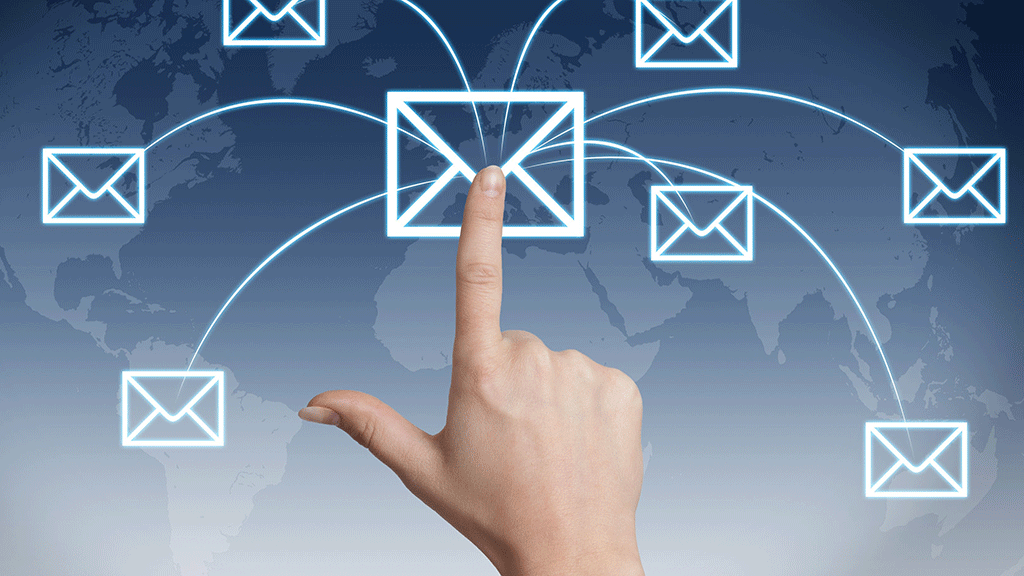“The best marketing doesn't feel like marketing.“
~ Tom Fishburne
Welcome to our guide on email marketing tips – what exactly is email marketing?
As a pivotal tool in the digital marketing arsenal, email marketing offers unparalleled opportunities for businesses to connect with their audience, nurture leads, and drive conversions.
In this hike through the topography of email marketing, our goal is to equip you with the knowledge and skills necessary to leverage email marketing effectively. Whether you are new to this skill or looking to refine your existing strategies, we hope to provide some insights and actionable advice.
Key Takeaways
- Email Marketing Foundation: Emphasizes strategic planning, content creation, audience segmentation, and performance analysis as core components.
- Audience Understanding: Crucial for delivering targeted messages that resonate with needs and interests, enhancing the effectiveness across various industries.
- List Building Strategies: Incorporates sign-up forms on websites and social media, along with incentives to join, for robust email list growth.
- Content and Design: Focuses on crafting compelling content and engaging design, including personalized and relevant messages with clear calls to action.
- Campaign Types: Distinguishes between awareness-building, lead generation, nurture, traffic generation, and revenue-generating campaigns for specific objectives.
- Execution Best Practices: Highlights the importance of compelling titles, clear calls to action, and using email builders and automation tools for efficient campaign management.
- Analysis and Optimization: Measures success through key metrics like open rates, CTR, conversion rates, and utilizes A/B testing for continuous improvement.
- Legal Compliance: Stresses adhering to email marketing regulations like GDPR and CAN-SPAM to maintain trust and legal integrity.
- Cost and ROI: Discusses balancing budget and effectiveness, focusing on personalization and segmentation to maximize email marketing ROI.
- Tools and Resources: Recommends leveraging platforms like Mailchimp, HubSpot, and utilizing educational resources for campaign optimization.
Navigating the Landscape of Email Marketing
Email marketing, when executed correctly, can yield significant returns on investment. It's a blend of strategic planning, content creation, audience segmentation, and performance analysis.
Let's start by exploring the foundational elements of email marketing, including list building and understanding your audience. As we progress, we will cover advanced topics such as designing engaging email content, personalizing campaigns, and utilizing automation tools for efficiency and effectiveness.
Additionally, we'll have a look at the challenges and complexities of email marketing and legal regulations and measure the success of your campaigns. We'll cover some best practices, industry insights, and practical email marketing tips to help you avoid common pitfalls and maximize the impact of your email marketing efforts.
The Essence of Email Marketing
At its core, email marketing is more than just sending out emails. It's a strategic communication process that involves understanding your audience and delivering targeted messages that resonate with their needs and interests. In this digital era, email marketing stands as one of the most effective channels for reaching out to customers, offering a direct line of communication that can be personalized and scaled according to your business objectives.
Effectiveness Across Industries: Email marketing's versatility allows it to be effective across various industries. For B2B companies, it serves as a key tool for content distribution and lead nurturing. In the B2C sector, it's vital to drive sales and build customer loyalty. E-commerce businesses leverage email marketing for cart abandonment strategies and personalized product recommendations, while real estate companies use it for property listings and client updates. The effectiveness of email marketing in each of these sectors hinges on understanding the unique preferences and behaviors of each audience.
Challenges and Disadvantages: While email marketing offers numerous benefits, it also comes with its own set of challenges.
Standing out in crowded inboxes requires creative and engaging content. Building and maintaining an email list is a continuous effort, and working within the legal landscape (like GDPR and CAN-SPAM regulations) is essential for compliance. Additionally, issues like deliverability and the risk of being marked as spam can affect the success of your campaigns.
Building an Email List
Strategies for Gathering Email Addresses: The foundation of successful email marketing is a robust email list.
Building this list involves several strategies. First, incorporating sign-up forms on your website is essential. Places such as the homepage, blog sections, and during the checkout process are strategic locations. Offering incentives like exclusive content, discounts, or freebies can significantly increase sign-up rates. Another effective strategy is utilizing social media platforms to encourage newsletter sign-ups, thereby leveraging your existing audience.
Best Practices for Email List Growth and Maintenance: Growing your email list is just the beginning. Maintaining its health is equally important.
Regularly cleaning your email list to remove inactive subscribers helps maintain a high engagement rate. Encouraging current subscribers to share and forward your emails can organically expand your list. It's also a good practice to ensure that the sign-up process is easy and that the value proposition of your emails is clear to potential subscribers.
Creating Gated Content and Lead Magnets: Gated content and lead magnets are powerful tools for building an email list. By offering valuable resources like ebooks, webinars, or exclusive reports in exchange for email addresses, you can attract a highly engaged audience. These offerings must align with your audience's interests and add real value, as this will encourage sign-ups and foster a sense of trust and authority.
Email Marketing Tips on Strategizing and Planning
Defining Your Audience: The success of your email marketing strategy hinges on how well you understand your audience.
Start by creating buyer personas, which are semi-fictional representations of your ideal customers based on market research and real data about your existing customers. Consider factors such as demographics, behavior patterns, motivations, and goals. This understanding allows you to tailor your messaging to meet the specific needs, concerns, and desires of different segments of your audience, making your emails more relevant and engaging.
Techniques for Segmenting Your Email List: Segmenting your email list is critical for delivering targeted and personalized content.
You can segment your audience based on various criteria like location, age, purchase history, or engagement level with previous emails. For instance, sending location-specific offers or content to subscribers in a particular region or targeting users who have shown interest in specific topics can significantly enhance the effectiveness of your campaigns.
Developing a Cohesive Email Marketing Strategy: Developing a cohesive strategy involves setting clear objectives for what you want to achieve with your email campaigns – be it brand awareness, lead generation, customer retention, or sales. Plan your email frequency and types of emails to align with these goals. A content calendar can be instrumental in organizing and scheduling your email campaigns, ensuring a consistent and strategic approach to your email marketing efforts.
Content Creation and Design for Email Marketing
Crafting Effective Email Content: Creating email content that resonates with your audience is a cornerstone of successful email marketing.
Start with a compelling subject line, as it's the first thing recipients see and determines whether they open the email. The content should be relevant, informative, and engaging, keeping the reader's interest from start to finish. Personalized content, which can include the recipient's name or references to their past interactions, often leads to higher engagement rates. It's also important to have a clear and compelling call-to-action (CTA) in each email, guiding the recipient on what to do next.
Design Principles for Engaging Emails: The design of your email plays an important role in engaging your audience.
The design should be visually appealing and reflect your brand's identity. Use a responsive design that works well on both desktop and mobile devices. Keep the layout clean and simple, making it easy for readers to navigate. Use images and graphics judiciously to complement your content without overwhelming it. Pay attention to the color scheme, typography, and white space, as these elements significantly impact the overall readability and appeal of your email.
Personalization and Storytelling in Email Marketing: Incorporate storytelling into your emails to create a more personal and memorable experience for your readers.
Sharing stories about your brand, customer testimonials, or success stories that can make your content more relatable and engaging is one of the best email marketing tips you should implement. Personalization goes beyond addressing the recipient by name; it's about tailoring the content to their interests and behaviors. By leveraging data insights, you can customize your emails to reflect the recipient's journey with your brand, making each interaction unique and relevant.
Types of Email Campaigns
Overview of Email Campaign Types: Email marketing campaigns come in various forms, each serving specific purposes and objectives.
- Awareness-building campaigns focus on introducing a new product or service.
- Lead generation campaigns might offer downloadable assets or blog articles to capture leads.
- Nurture campaigns attempt to deepen relationships with existing leads, while traffic generation campaigns drive recipients to a specific webpage or offer.
- Revenue-generating campaigns are designed to drive sales and conversions directly.
Successful Campaign Examples in Different Contexts
To illustrate the effectiveness of different types of campaigns, it's helpful to look at real-world examples. For instance, a welcome email campaign from a retail brand can set the tone for customer relationships and often boasts high engagement rates.
An email series promoting a webinar can be an effective lead-generation tool, while a time-limited discount offer can spur immediate purchases and drive revenue.
Shopping Cart Abandonment and Mini-Course Campaigns
Two specialized types of campaigns are shopping cart abandonment and mini-course emails.
- Abandoned cart emails are triggered when a customer leaves items in their online shopping cart, gently nudging them to complete the purchase.
- Mini-course emails, on the other hand, deliver educational content over a series of emails, providing value and building authority, which can lead to increased trust and sales in the long term.
Execution and Best Practices
Crafting Compelling Email Titles and Messages: The title, or subject line, of your email is critical. It should be engaging and give the recipient a compelling reason to open the email.
Avoid misleading headlines and focus on clarity and relevance. The message body should align with the subject line and deliver on its promise. Keep the message concise and focused, addressing one primary topic or call to action. As we discussed earlier about email marketing tips, personalizing the message to the recipient can significantly increase engagement.
Importance of Clear Calls to Action: Every email should have a clear call to action (CTA) that guides the recipient on what to do next.
Whether it’s to visit a website, sign up for a webinar, or make a purchase, the CTA should be straightforward to find. Using action-oriented language, contrasting colors for buttons, and placing the CTA prominently within the email can greatly enhance its effectiveness.
Utilizing Email Builders and Automation Tools: In today's digital marketing landscape, leveraging email builders and automation tools is essential for efficient campaign management.
These tools allow you to design visually appealing emails without needing extensive technical skills. They also enable the automation of repetitive tasks like sending welcome emails, follow-up messages, and personalized content based on user behavior. Utilizing these tools saves time, ensures consistency, and helps scale your email marketing efforts.
Analysis and Optimization
Measuring the Success of Email Campaigns: This is one of those often overlooked (or at least not evaluated often enough) email marketing tips–measuring the success of your email marketing efforts, understanding their impact, and identifying areas for improvement.
Key metrics to monitor include open rates, click-through rates (CTR), conversion rates, and unsubscribe rates. Open rates help gauge how well your subject lines are performing, while CTR gives insights into the effectiveness of your message and calls to action. Conversion rates measure the ultimate success of your emails in achieving their intended goal, be it sales, sign-ups, or other actions.
Key Metrics and KPIs to Monitor: Beyond the basic metrics, it’s important to look at the overall return on investment (ROI) of your email campaigns.
This involves tracking the revenue generated from email-driven traffic against the costs of running the campaigns. Analyzing customer lifetime value (CLV) can also provide insights into the long-term value generated by your email marketing efforts. Engagement over time, list growth rate, and email sharing/forwarding rates are additional KPIs that can offer a deeper understanding of your campaign’s performance.
Continuous Improvement Through Testing and Optimization: A/B testing is a powerful tool for optimizing your email campaigns.
By testing different elements of your emails, such as subject lines, email copy, or CTA buttons, you can determine what resonates best with your audience. Regularly updating and refining your email strategy based on these insights is key to staying relevant and effective in your email marketing. It’s a process of continuous learning and adaptation, ensuring that your campaigns are as effective as possible.
Legal Compliance and Ethical Practices
Working With Legal Regulations in Email Marketing: Email marketing is governed by various laws and regulations, which vary by country.
Familiarity with these regulations is a key to ensure compliance and avoid legal issues. In the EU, for example, the General Data Protection Regulation (GDPR) sets stringent rules for data privacy and consent. In the US, the CAN-SPAM Act outlines requirements for commercial messages, including the need for a clear opt-out mechanism. Understanding and adhering to these laws not only protects your business legally but also builds trust with your audience.
Ethical Considerations in Email Marketing: Ethical email marketing goes beyond mere legal compliance.
Ethics involves respecting the privacy and preferences of your subscribers. This includes obtaining explicit consent before sending emails, being transparent about how subscriber data is used, and providing value through your emails rather than just pushing sales. Maintaining an ethical approach in your email practices fosters long-term relationships with subscribers and enhances your brand's reputation.
A Few Key Points on GDPR and Email Marketing: For businesses with EU customers, GDPR compliance is critical. Key aspects include obtaining explicit consent to send emails, providing clear information about data usage, and ensuring the right to access and erase personal data. It's essential to have processes in place to address these rights and to maintain records of consent for auditing purposes.
Cost Considerations and ROI in Email Marketing
Costs Associated with Email Marketing: While email marketing is often touted for its cost-effectiveness, it's important to understand the associated costs.
These can include expenses for email marketing platforms, which vary based on features and the size of your email list. Additionally, costs can arise from creating content, especially if you employ designers or copywriters. For businesses just starting, many platforms offer free tiers, but as your list grows, so will your expenses.
Maximizing ROI in Email Marketing: The return on investment (ROI) in email marketing is generally high compared to other marketing channels.
To maximize ROI, focus on personalizing your emails, segmenting your list, and continuously testing and refining your strategy. Effective targeting and personalization can significantly increase engagement rates, leading to higher conversion rates and, ultimately, a better return on your investment.
Balancing Budget and Effectiveness: Balancing your budget with the effectiveness of your campaigns is key.
Starting with cost-effective solutions and free tools can be a good approach for small businesses. As your business and email list grow, investing in more advanced tools and strategies becomes more feasible and necessary. Regularly reviewing your campaigns' performance in relation to the costs can help you allocate your budget more effectively.
Email Marketing Tools and Resources
A wide range of tools is available to help you execute and manage your email marketing campaigns efficiently. These tools offer various functionalities, from basic email design and sending capabilities to advanced automation, segmentation, and analytics features. Popular platforms like Mailchimp, HubSpot, and Constant Contact cater to different needs and business sizes, offering scalable solutions as your business grows.
Choosing the Right Email Marketing Platform: Selecting the right platform depends on your specific needs, budget, and the scale of your operations.
For small businesses or those just starting, platforms with free tiers or low-cost options can be ideal. As your requirements become more complex, platforms offering advanced automation, integration with CRM systmes, and detailed analytics become more valuable. It's important to consider factors such as ease of use, customer support, and integration capabilities with other tools you use.
Utilizing Resources for Learning and Optimization:
Besides the tools themselves, numerous resources are available for learning and optimizing your email marketing efforts.
Online courses, webinars, blogs, and community forums provide valuable insights and tips. Many email marketing platforms also offer their educational resources, including guides, tutorials, and best practice recommendations. Keeping up-to-date with the latest trends and strategies in email marketing through these resources can greatly enhance your campaigns.
Final Thoughts
As we wrap up this comprehensive guide on email marketing, it’s clear that the power and potential of this digital marketing channel can be significant. Whether you're a small business owner, a marketing specialist, or someone simply interested in the digital marketing landscape, understanding and effectively utilizing email marketing can make a significant difference in your engagement, conversion rates, and overall business success.
Staying informed about new trends, technologies, and best practices is key to keeping your email marketing strategy effective and relevant. Remember, email marketing is not just about sending messages; it's about building relationships, understanding your audience, and delivering value.
FAQs on Email Marketing

See you out there!



